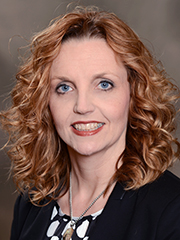Amid a sea of priorities and opportunities, how can leaders create clarity, confidence, and competence for the future? The answer is simple—strategy and execution. For leaders, management guru Peter Drucker’s words still ring true: “The best way to predict the future is to create it.”

I’ve been intrigued with the ability to shape and create the future since I was a small child. Over time, it became my passion. Early in my career, I learned “Strategy 101”: Engage, assess, build a plan, work it, and measure success. It’s simple, right? It was—during a time when everything was based on providing more—more testing, more procedures, more specialization, and more advanced technology. Now we’re challenged to create strategy, moving beyond “what we can do” to “what adds value.” Most often, this means doing less, while being deliberate and measured, using evidence, measuring outcomes, and considering value. I’ve learned three major lessons on this journey between then and now.
Lesson 1. Strategy convenes the voices of key stakeholders, unifies the team, and casts a shared vision. The magic of strategy is the unity created by sharing the vision, playbook, and definition of success.
Lesson 2. Team unity feeds engagement, a true expression of beliefs and attitudes, manifesting itself in the degree of effort teams and individuals are willing to give. Early involvement, buy in, and understanding equips team members to contribute—both individually and collectively—and to focus on aligning goals and achieving results.
Lesson 3. More important than deciding what to do, is deciding what not to do. The leadership discipline of creating a few defined, focused initiatives or priorities makes execution and success possible. This clarity creates certainty, aligns resources, and leverages effort. It also allows teams to elevate the shared vision and strategy above demand of circumstances.
These lessons were reinforced during my recent visit with the Arizona Chapter, where Peter Patterson, MD, spoke about his work to eliminate the treatment of elders for urinary tract infections they don’t have, whether as result of misdiagnosis or excessive caution, thereby reducing incidence of antibiotic resistance and eliminating complications. Patterson’s first step was assembling a team of medical, administrative, and nursing staff around a common goal. They shifted the mindset from “just in case” care to “just in time” care, with a new playbook for infection identification, treatment, results auditing, and provider feedback. The result was a significant reduction in treatment rates and elimination of C. difficile. Having mastered the playbook, the team tackled another overtreated diagnosis: pneumonia.
Today, Patterson shares that playbook with others, spreading the impact to many. He and I quickly picked up on our mutual message—the calling to authentic stewardship of lives, relationships, and resources. Will you answer that call? Make a choice and join us.





